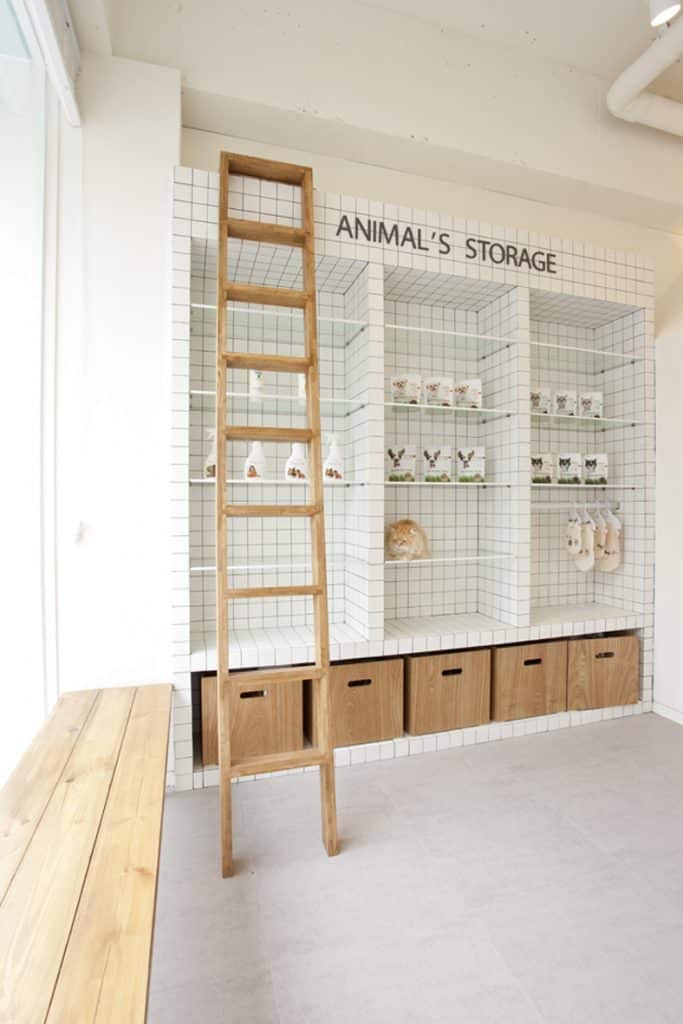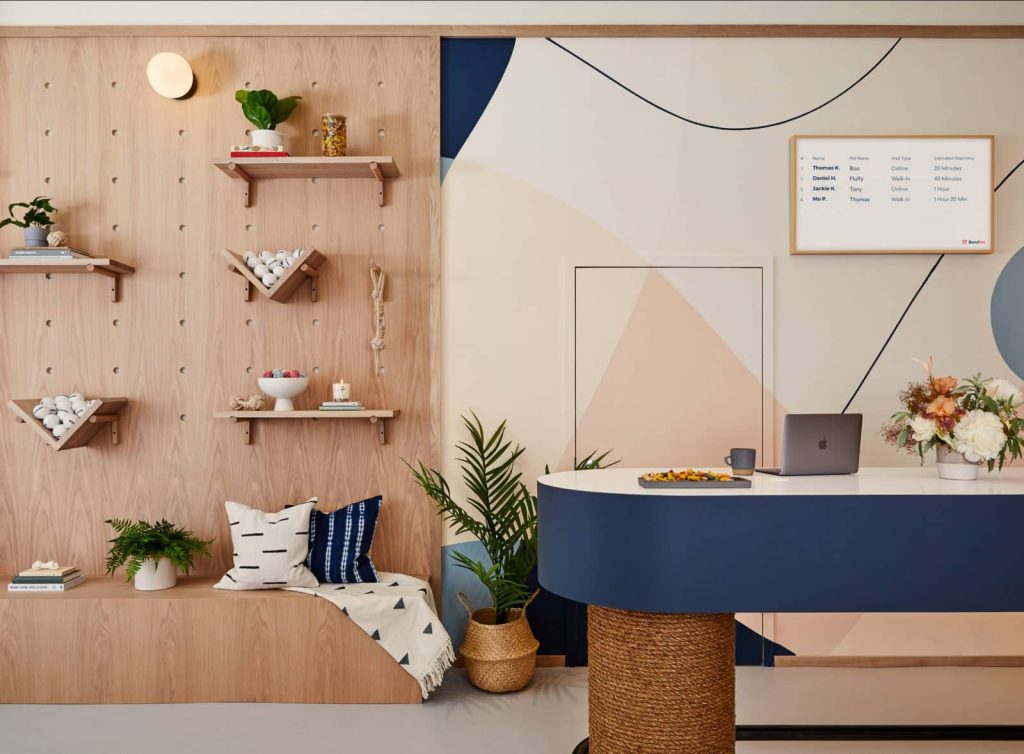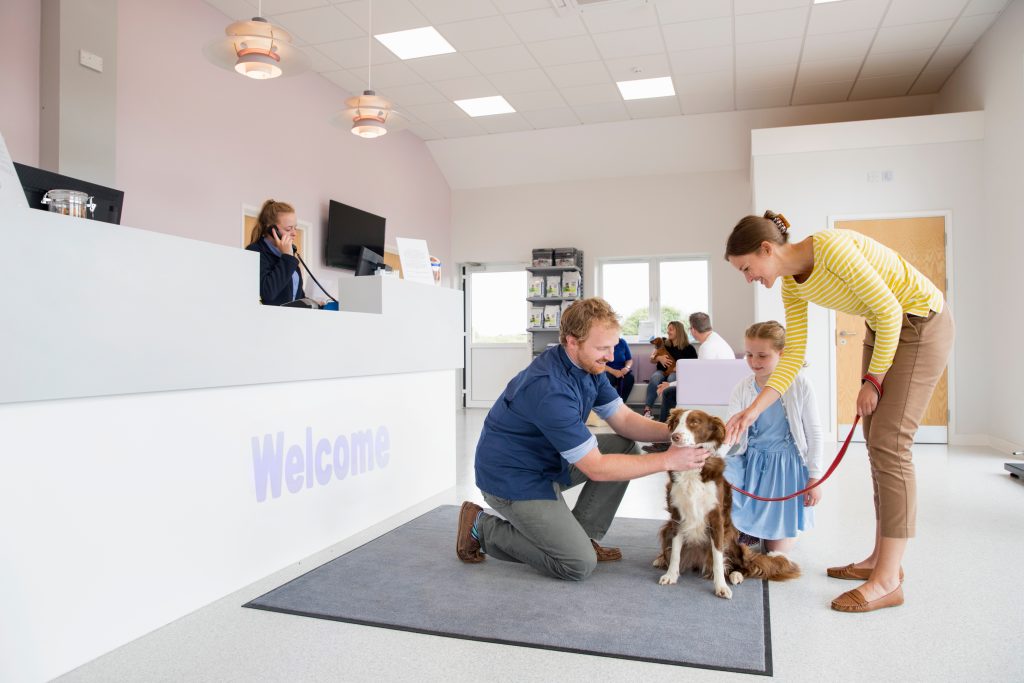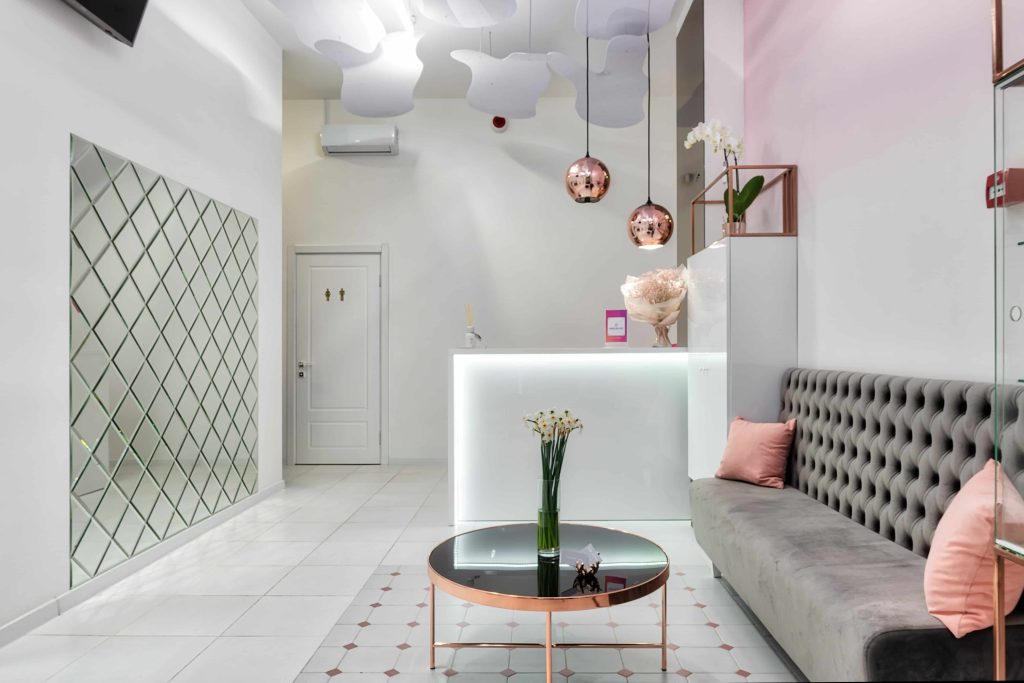Design requirements and concerns for Veterinary clinics are pretty specialised; there are many rules and regulations to consider to ensure the clinic is safe, hygienic and a well-functioning medical environment.
Vet clinic designs are a balancing act between meeting the needs of patients and staff, meeting the practical and sanitary concerns that arise when working with animals and maintaining a stunning and esthetically pleasing environment.
To help with this design process, we have put together the best vet clinic design ideas for you to consider.
As always, this is just a guide, and we recommend hiring an experienced vet clinic designer to help produce the best vet clinic for you.

Before diving into design ideas, it is essential to make a plan!
“By failing to plan, you are planning to fail” – Benjamin Franklin.
It might seem obvious, but you would be surprised how often people rush the designing phase of a project only to be disappointed with the result as things were missed or not well thought-out.
A great place to start when getting prepared to engage a fitout designer or if you’re thinking of renovating your current site is to ask your team or colleagues what they believe is working in your current practice and could be improved.
Although everyone will have different opinions, your team will be able to provide you with helpful criticism and give you a wonderful place to start when building the clinic.
Furthermore, doing your research and gathering inspiration from other vet clinics is essential. Try having a look on Pinterest or visiting vet clinics in your area and write a list of the elements you like and dislike.
Lastly, when thinking about your clinic’s layout, keep the workflow top of mind. You want your everyday procedures and practices to flow as smoothly as possible. The interior designers will find this input and information to be of excellent service in shaping the design brief.
Veterinary Clinic Design Ideas
1. Reception Area
For your reception staff to view the client as they enter the clinic, the placement and height of your welcome desk are crucial. Your fit-out specialist will suggest the ideal desk height. It’s also helpful if your client can immediately see the reception desk and know where to go to check in for their appointment as soon as they enter the building.
Place the reception close to the entrance but not too close as it will create a bottleneck, mainly if multiple clients arrive. The client will be effectively looked after as they wait for their appointment using this strategy.
Brochures and reading material for dogs can be available. Well, not for them, but for their owners to be aware of critical facts about them. Additionally, clients may be able to purchase trinkets for their pets and pet food on shelves for them to take home for their animals.
The fundamental procedure is to weigh a dog on a scale before taking it into an exam room, which is frequently located immediately in the reception area.
2. Waiting Area
The size of your waiting room will depend on how busy your Vet clinic usually gets, so make sure you have enough chairs, couches or benches for your clients to sit on while they wait; you want them to be as comfortable as possible.
To assist customers in feeling at ease without feeling confined, consider adding a small table with some greenery.
Separate waiting areas for cats and dogs have been a recent trend in several veterinary clinics. This is only feasible if you have space, but it’s a good idea if your waiting room gets overcrowded quickly. It will also put pets at ease before their appointment. For example, cats won’t pick up the scents from previous dog patients.
If the weather permits, think about setting up a few benches outside where the owners of frightened or noisy animals can sit. Maintaining outdoor areas clean and preventing the spread of fecal-borne diseases can be accomplished by installing a dog waste station with waste bags and a receptacle.
3. Consult Rooms
It is advised that the consulting room have two doors for efficiency.
Your veterinary office gives the doctor direct access to the pharmacy or treatment facilities, resulting in an effective and efficient workflow.
Your consultation rooms should have adaptable, uncluttered furniture. For larger animals, in particular, folding tables are a good idea because some veterinarians prefer to examine their patients on the floor.
Here are six veterinary practice design ideas to help you get started.

Veterinary Clinic Design Ideas #1
Optimise the use of colour
Everyone has a favourite colour, but did you realise that animals may find your favourite hues boring or unsettling? To accommodate your clients and your patients, this is a crucial factor to consider while painting your veterinary hospital. The red, yellow, and orange hues for dogs and cats will be viewed in the dull grey range, making it challenging to distinguish between surfaces.
Blues, greens, and purples are the hues to pick from the visible spectrum that cats and dogs can see the best. You can check out the colour scheme we used for our multi-level vet clinic in surry hills here.
Veterinary Clinic Design Ideas #2
Improve Natural Lighting
“Natural light supports an animal’s circadian cycles in housing and ward areas.” – Today’s Veterinary Business.
Think about the effects of natural light while planning the layout of your veterinary hospital or clinic. Studies have found that employees who work in spaces with natural light are happier and even more productive and that sunshine is also associated with hastening the healing process.
The quality of indoor veterinary facilities is significantly impacted by illumination, particularly in exam rooms. Proper illumination can help improve animal behaviour in veterinary settings, leading to more fruitful examinations and treatments.
To maximise natural light, you can design your veterinary clinic with glass doors, large windows, skylights, and mirrors that reflect light. For your clinic’s atmosphere, it’s crucial to plan your office space around how to maximise natural light.
Create a Warm and Welcoming Design
Veterinary Clinic Design Ideas #4
Veterinarian clinics work hard to ensure that pets and their owners feel at ease during the appointment.
Many clinics are adopting the appearance of a domestic home or a traditional barn-style architecture, from the exterior design to the interior layout and decor, rather than a clinical setting. Clinic waiting areas are warm and inviting within the facility to make animals feel comfortable and to promote a smooth and relaxing experience.

Keep Your Clinic Odour-Free
Veterinary Clinic Design Ideas #3
Routine vaccinations and checkups are unlikely to cause alarm, but caring for an ill or injured animal can be incredibly stressful for staff members, pets, and their devoted owners.
The ultimate “chill pill” in the veterinary clinic, where survival frequently hinges on quick thinking and the capacity to concentrate on the task at hand, is fragrance.
To prevent unpleasant odours, the entire structure must be zoned with several independent heating and air conditioning systems, each with its own air supply and return; some of these exhaust air to the outdoors. For instance, we don’t want exhausted air to be pumped back through the building in isolation rooms or hospital wards where it can be contaminated by odour or illness.
Veterinary Clinic Design Ideas #5
Innovative Technologies
Numerous clinics are incorporating technology directly into the patient experience because new medical technologies are easily accessible in the veterinary profession.
For example, exam rooms are equipped with huge TVs that can be used to access x-rays, videos, patient records, and more.
Checkout stations are now available in exam rooms, so customers no longer need to wait in lines.

Incorporating Greenery
Veterinary Clinic Design Ideas #6
People cherish openness and wellness, and this is particularly true when speaking of a veterinary clinic. Plants remind us of the same attributes we want to see in our pets: health, vigour, and natural beauty.
However, not all indoor plants work well in a veterinary clinic setting. For instance, peace lilies are fatal to cats while being robust and excellent for low-light interiors.
Which indoor plants are pet safe?
Consider Calathes, Boston ferns, cast iron plants, or golden cane palms. These thrive in low, indirect light and are pet-friendly. Choose big pots for floor plants and tie other banks to windowsills or shelves to prevent collisions with eager Labradors.
A veterinary office needs landscaping that can withstand regular urination since dogs must establish their territory or attend to natural urges while waiting for an appointment.
The evergreen Japanese Spindle Tree, also known as Euonymus Japonica, is a resilient plant. This plant has tough, urine-resistant leaves. Sword ferns, New Zealand flax, and Mexican sage are some more plants that can tolerate pee.
Construct a solid border out of pebbles or wooden sleepers to keep the pathway apart from the garden. This simplifies preventing overexcited patients from squishing your landscaping’s vegetation.
Summary
Vet visits with a cherished pet may not always be enjoyable. Because of this, it’s crucial that the design of your veterinary hospital be airy, welcoming, cozy, and upbeat. You can reassure your clients and make them feel at home by picking the ideal layout, furnishings, and decor.
It’s undoubtedly intimidating to start your own practice or renovate your current location.
Even though you might not have all the solutions, having a fantastic interior design team on your side will help you get started on creating a contemporary and pet-friendly veterinary office.
Want to improve your veterinary clinic game? Here’s how we can help you:
Since designing and decorating a Vet Clinic needs a certain amount of additional planning work and creative thinking, hiring an experienced fit-out professional would undoubtedly make things easier and quicker. Call Us On: 1300 LETS BUILD or send us an email at: [email protected].
You Might Also Like:
If you enjoyed reading “Veterinary Clinic Design Ideas to Create a Pet-Friendly Environment”, you may also be interested in the following:
- 11 Unique Reception Desk Design Ideas to Attract New Clients
- 5 Feng Shui Tips For Your Office To Increase Productivity, Motivation, and Success
- 10 Signs You Should Renovate Your Commercial Space Without Any Further Delay
- 8 Useful Tips for Keeping Your Business Open During A Renovation
- The Only 8 Tips You’ll Ever Need to Save Costs on Your Commercial Fit Out
- How To Use Colour Psychology In Interior Design
- 5 Medical Waiting Room Design Ideas to Boost Your ROI
